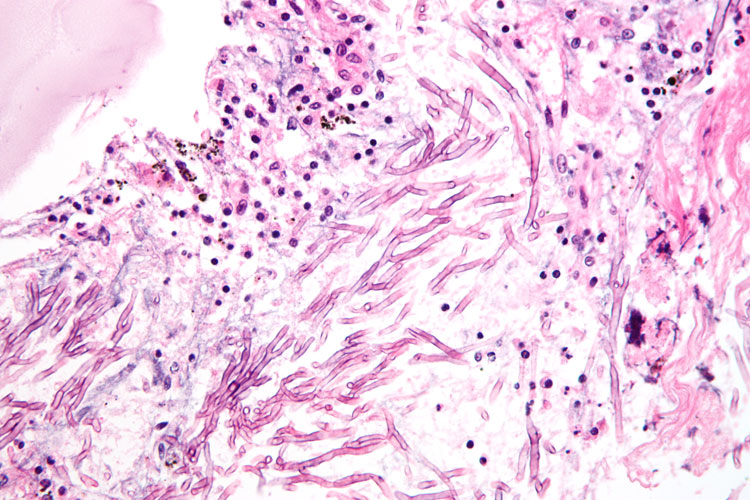A spore is a cell that certain fungi, plants (moss, ferns), and bacteria produce. Spores are involved in reproduction.
Certain bacteria make spores as a way to defend themselves. These spores have thick walls. They can resist high temperatures, humidity, and other environmental conditions.
Molds and mildews develop from spores, which are in the air all around you. As soon as spores settle in an area with the right conditions for growth, they establish colonies, which are often visible to the naked eye. These colonies are a source of more spores, can cause unsightly stains, and may release low levels of toxic chemicals called mycotoxins into the air.
Mold has become a major environmental concern in homes and in the workplace. Indeed, mold spores are found almost everywhere, but current legal cases and media coverage of mold problems inside buildings have projected this indoor air quality issue into the public spotlight.
Cellulose-rich building materials, including wood studs, drywall, ceiling panels, carpeting, wallpaper, and insulation (when wet), may serve as nutrient source to mold. Furthermore, certain mold species have been known to produce allergic reactions and illnesses in humans.
Lowering toxic dust exposure can generally be accomplished by using common dust control methods, such as using a HEPA vacuum to collect dust at the point where it was created prior to getting into the air and having workers inhale it.
Suggested Industrial Vacuums for Recovery of Spores
PrestiVac HEPAPlus* Vacuums are specifically designed to safely vacuum toxic dusts. Equipped with a Certified Absolute HEPAPlus*filter with an efficiency of 99.995% on 0.2 micron so there is no risk of exposure or contamination for the operator or the environment. These vacuums are tested for absolute filtration. Testing Method: IEST RP-CC034.3. H14. MIL-STD 282 / A.S.T.M. - D2986-91. MPPS method EN 1822.
PrestiVac cleanroom vacuums are specifically designed to be used in ISO 4 (Class 10) cleanroom/controlled environments for decontamination control. The stainless-steel construction is easy to clean and sterilize. The exhaust air is filtered through a ULPA filtration system with an efficiency of 99.9995% @ 0.12 microns, eliminating the risk of any contamination. Our cleanroom vacuums are grounded and ESD safe so there is no risk of any static build up. Our cleanroom vacuums are also equipped with an electromagnetic (EMI), radio frequency interference (RFI) filter to protect any electronic equipment in the cleanroom.
Which Industries are at Risk with Spores?













